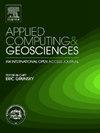Land use and land cover classification for change detection studies using convolutional neural network
IF 3.2
Q2 COMPUTER SCIENCE, INTERDISCIPLINARY APPLICATIONS
引用次数: 0
Abstract
Efficient land use land cover (LULC) classification is crucial for environmental monitoring, urban planning, and resource management. This study investigates LULC changes in Nanjangud taluk, Mysuru district, Karnataka, India, using remote sensing (RS) and geographic information systems (GIS). This paper mainly focuses on the classification and change detection analysis of LULC in 2010 and 2020 using linear imaging self-scanning sensor-III (LISS-III) remote sensing images. Traditional methods for LULC classification involve manual interpretation of satellite images, which provides lower accuracy. Therefore, this paper proposed the Convolutional Neural Network (CNN)-based deep learning method for LULC classification. The main objective of the research work is to perform an efficient LULC classification for the change detection study of the Nanjagud taluk using the classified maps of the years 2010 and 2020. The experimental results indicate that the proposed classification method is outperformed, with an overall accuracy of 94.08% for the 2010 data and 95.30% for the 2020 data. Further, change detection analysis has been carried out using classified maps and the results show that built-up areas increased by 8.34 sq. km (0.83%), agricultural land expanded by 2.21 sq. km (0.23%), and water bodies grew by 3.31 sq. km (0.35%). Conversely, forest cover declined by 1.49 sq. km (0.15%), and other land uses reduced by 11.93 sq. km (1.22%) over the decade.
基于卷积神经网络的土地利用和土地覆盖分类变化检测研究
有效土地利用土地覆被分类对环境监测、城市规划和资源管理具有重要意义。利用遥感(RS)和地理信息系统(GIS)对印度卡纳塔克邦Mysuru地区Nanjangud taluk的土地利用价值变化进行了研究。本文主要利用线性成像自扫描传感器- iii (LISS-III)遥感影像对2010年和2020年LULC进行分类和变化检测分析。传统的LULC分类方法涉及人工解译卫星图像,精度较低。因此,本文提出了基于卷积神经网络(CNN)的深度学习方法用于LULC分类。研究工作的主要目的是利用2010年和2020年的分类地图,对南美洲豹的变化检测研究进行有效的LULC分类。实验结果表明,本文提出的分类方法在2010年和2020年的分类准确率分别达到了94.08%和95.30%。此外,利用分类地图进行变化检测分析,结果显示建成区面积增加了8.34平方公里。新增农业用地2.21平方公里(0.83%);新增水体面积3.31平方公里,增长0.23%。公里(0.35%)。相反,森林覆盖面积减少了1.49平方公里。Km(0.15%),其他用地减少11.93平方公里。Km(1.22%)。
本文章由计算机程序翻译,如有差异,请以英文原文为准。
求助全文
约1分钟内获得全文
求助全文
来源期刊

Applied Computing and Geosciences
Computer Science-General Computer Science
CiteScore
5.50
自引率
0.00%
发文量
23
审稿时长
5 weeks
 求助内容:
求助内容: 应助结果提醒方式:
应助结果提醒方式:


